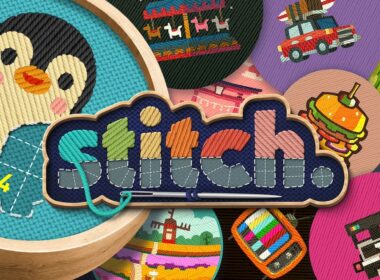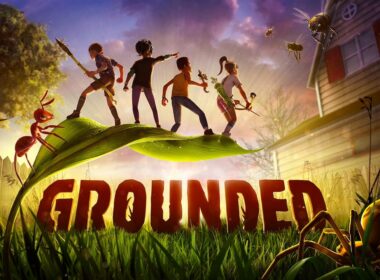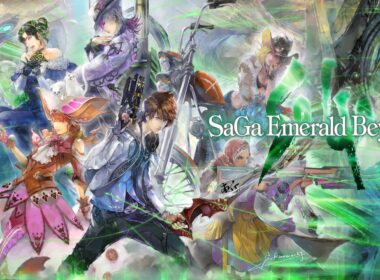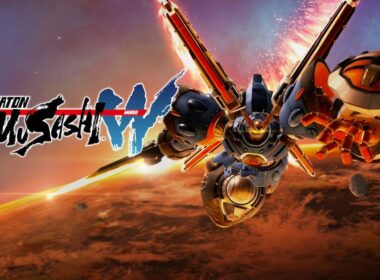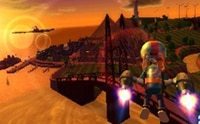The Pilotwings series has previously spawned a duo of titles, Pilotwings and Pilotwings 64, each released to coincide with the launch of the SNES and Nintendo 64 respectively to demonstrate the true prowess of each console. Now, after a fifteen-year hiatus, the series is back with Pilotwings Resort and is set to star amidst the launch line-up for the anticipated arrival of the Nintendo 3DS handheld.
For those unfamiliar with the franchise, the Pilotwings series can effectively be described as being an arcade-style flight simulator that tasks the player in attempting to earn pilot licenses through a variety of activities including flying planes and skydiving to name but a few. Such a formula, which has proved so popular in the past, doesn’t seem to have been broken within this third outing from Nintendo.
With the idyllic location of Wuhu Island now as its setting, having previously featured in both the Wii Fit series and Wii Sports Resort, the demo on hand at Nintendo’s recent 3DS Preview event held in Amsterdam provided the opportunity to test out three of the airborne methods used to navigate the island – Hang Gliding, a Biplane and the Rocket Belt (essentially a Jet Pack, for the uninitiated!). Seemingly becoming a staple of Nintendo’s first-party software, there’s also Mii functionality incorporated into the game too allowing your own creations to become wannabe pilots.
The game divides itself between Mission Flight and Free Flight modes, and, as you’d expect, the former offers more challenge-based gameplay. Players will be able to choose a varying difficulty rank, ranging from Training up to Platinum, in which they’ll be tasked with challenges such as flying through a series of rings, popping balloons, take photos of landmarks whilst gliding, steering yourself to land within the middle of a bullseye target or even onto a runway aboard a ship found in the middle of the sea. The difficulty of such challenges will then suitably escalate as you progress through the varying ranks, providing an ample learning curve with later missions perhaps tasking the player with shooting targets whilst flying. It isn’t too dissimilar to that seen within previous iterations of the series, fleshing itself out with plenty of light-hearted activities and relying on replay value in trying to better your scores, but that isn’t necessarily a bad thing.
Free Flight essentially allows you to fly around the island at your leisure, taking photos and hunting down secrets (of which we’re sure they’ll be a few hidden surprises…!). Within this mode, you’ll also soon spot a number of information circles hovering above certain locations and if you choose to pass through them you will be given information regarding the various landmarks that are scattered across Wuhu Island. In total there were 75 waiting to be discovered, yet within our demo, we were regrettably placed under a time limit – hopefully, this won’t be the case for the final game. Fortunately, those that you unlock are cumulative over the number of sessions you play.
From the outset, you’re sure to be impressed by not only the scale of Wuhu Island but also the quality of the visuals. A colourful sight to behold, there is an impressive draw distance on show here and the option to experience the island during Daytime, Evening or Night provides the necessary variation that players will seek. Detail within the environments is also to be noted – whilst soaring over the sea, for instance, you’ll see boats travelling below you or even whales surfacing to catch a tan… or air, maybe.
Those familiar with the franchise will easily become more than accustomed to the control setup after a short while, yet even those new to the series will no doubt find them accessible still. This is perhaps most in part to the introduction of the new Circle Pad, the Nintendo 3DS’ answer to the analogue nub that previously featured on Sony’s rival PSP handheld. It’s a fundamental addition to Nintendo’s new system and one that is far more comfortable to use than Sony’s counterpart.
As you can expect, each form of transport around the island will differ in terms of controls yet the core use of the Circle Pad for steering is applicable for all. Of the three that I tried, the Rocket Belt will perhaps take the most getting used to, with the player controlling the angle in which you thrust, yet it became the most rewarding form of travel once you had gotten to grips with it. Similarly, the Biplane, which flies at a continual speed, incorporates the use of a multitude of buttons – each shoulder button is used to bank left or right alongside performing barrel rolls, and the player may employ a brake or speed boost also. That leaves the Hang Glider, which is perhaps the most simplistic yet deceptively challenging. The fundamental flight controls are basic, yet maintaining your time in the air will rely upon you passing over thermal updrafts (marked by blue dots on the map) that will project you upwards to allow you to regain more altitude.
All in all, Pilotwings Resort provides a fun, family-orientated experience that Nintendo has long been acclaimed for, with a further heightened degree of challenge on offer for those seeking a little more. A colourful, polished title amidst the Nintendo 3DS launch line-up, Pilotwings Resort certainly doesn’t disappoint and makes a welcome return to the gaming scene.

